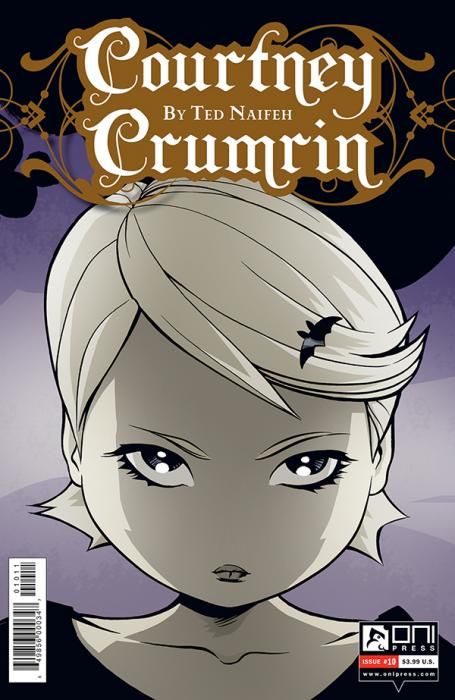"Courtney Crumrin" #10 wraps up the first major story arc of Ted Naifeh's new ongoing series. In a spectacular but unhurried way, it proceeds from the concrete into the mystical, from the mundane into the extraordinary, from deadpan jokes into transformative grief and back again, into a new ordinary.
Naifeh's Courtney Crumrin has the usual gothy, cute package of a teenage witch, but there's a lot more depth to her than just outsider angst, and "Courtney Crumrin" #10 excels at opening the emotional spigots. The events themselves feel highly artificial yet true, and Naifeh achieves the mythic resonance to make this paradox work. The climax and denouement of the story is a crescendo of feeling and dramatic noise clothed in poetic, fairy-tale-like word choice, but the emotions themselves feel sincere.
The opening scenes of "Courtney Crumrin" #10 are another round of bullying and persecution at school, what Naifeh has referred to as "the brutal alienation of the tweens." Although well-done, they feel run of the mill, but that is precisely what Naifeh intends, as Courtney realizes that her reaction to these everyday horrors point to an absence in herself. There is quick, darkly funny mall-scene interlude, with a great pun by Naifeh, before the story slides naturally into a hospital scene between Courtney and her Uncle Aloysius, who is Dumbledore to her Harry Potter.
Courtney's depressed yet forbearing attitude in tragedy is an endearing combination of melancholy and mature acceptance and endurance. It's a stark contrast to the mindlessly chipper and superficial personas of her mother and father, who are an amusing variation on the trope of Absent Parents.
Naifeh's use of the diary as an artifact, as a link between soul and memory, is also a typical plot device and symbol in fantasy. However, unlike in "Harry Potter," here the diary is used by good hands instead of evil ones, and from there, Naifeh's plot mechanics depend on the connection between the power of language and the use of magic. The scenes with the Council feels stretched out because the dramatic tension isn't high, but what happens in the aftermath, next morning, is a much bigger deal than all the explosions and dark skies.
Like his main character, Naifeh's artwork is a combination of sprawling gothic emotion and almost detached stoicism. His linework and composition always feel clean and minimalistic, especially in his iconic design of Courtney's face and outfit, and in the pure geometry of modern buildings. In keeping with all the history and mystery, though, Naifeh's backgrounds are spidery with asymmetrical lines and rich with beautifully ornate period details of old buildings, interiors and the fancy-dress clothes of Stockbrook and his cronies.
"Courtney Crumrin" #10 has the outlines of a heroic story. Naifeh has taken away much from Courtney, only to restore things to her now, but she is not repaid in exactly in the same coin. Technically, Courtney is leaving her old home in the last scene, but the shape of the ending is a homecoming, an event in which all things and people fall into their right places.
The ending of "Courtney Crumrin" has a lovely, unlooked-for happiness suffusing it. There's a twist about the narrator that is both surprising and poignant, and it feels like a gift for both Courtney and the reader. Naifeh also flashes briefly into the lives of supporting characters like Alicia and Gareth. Everyone gets their due. Normally, I'd say this magical, mystical wrap-up was too tidy, but the way that Naifeh reveals these twists, it feels perfect. The last five pages are a dazzling compression of time and emotion. It's worth reading or re-reading the whole "Courtney Crumrin" series, just to get the full impact of those moments.

